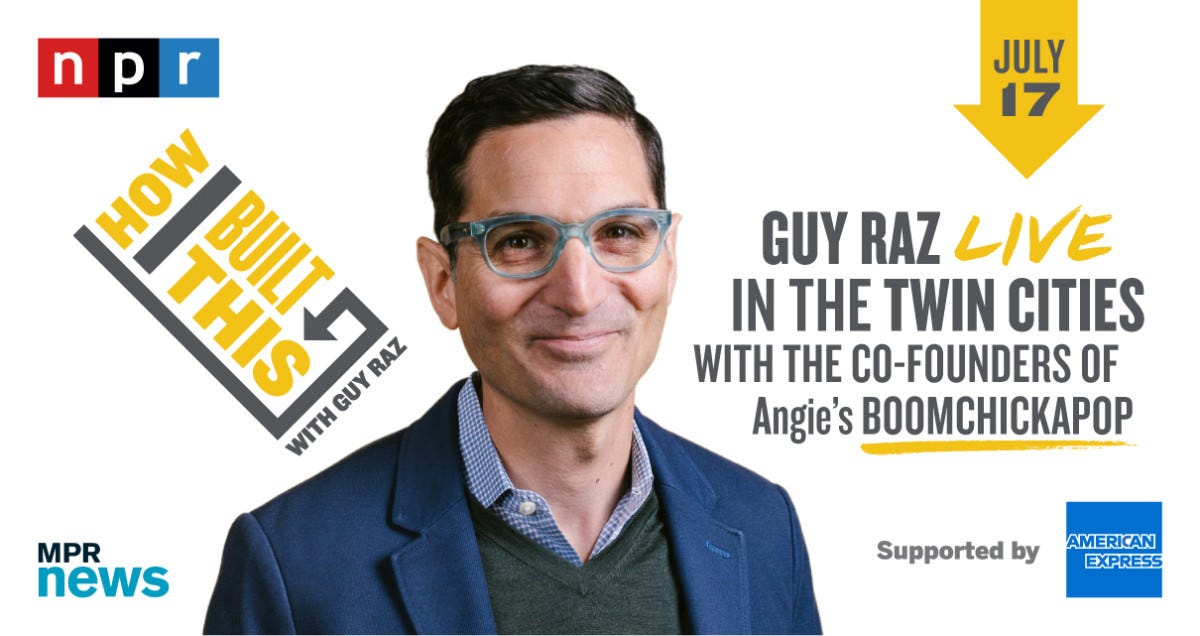Happy Sunday and a very warm welcome to all the new subscribers! I’m thrilled and honored to have you as readers and truly appreciate your thoughts and feedback 🙏. Each edition of 3 Things will contain a dive into 3 rabbit holes I’ve found myself going down recently. Subscribe to get each week’s edition straight to your inbox and if you enjoy it, please share (I suck at self-promotions so can use your help)! This past week I’ve been thinking a lot about:
FIGS for Non-Medical Professions
Live Podcasts
Hire Your First
1. FIGS for Non-Medical Professions
If you’re not in the healthcare industry, you may not have heard of FIGS, an LA based startup that went public on the NYSE a few weeks ago. FIGS manufactures and sells medical scrubs, a $10B industry in the US and a space that was largely ignored before they started the company in 2013. FIGS grew revenue from $1M in 2019 to an impressive $50M in 2020, partly due to the pandemic, but also due to shaking up an industry that was ripe for disruption. The company innovated in a lucrative but sleepy category by bringing high-tech fabrics and a bit of style to a utilitarian uniform that tens of thousands of healthcare workers are required to purchase themselves and wear daily (90% of healthcare workers are responsible for supplying their own scrubs). The company today has over 500,000 customers who purchase 8-12 pairs of scrubs a year. What’s also an interesting dynamic about this buyer demographic is that they are congregated in areas around hospitals so selling to these consumers is an easier feat since they’re easy to find, densely located, and spend a ton of time around other healthcare workers so word-of-mouth virality happens naturally.
Outside of healthcare professionals, there are dozens of other professions who are required to wear uniforms. Some examples include: chefs/food service workers, cleanroom technicians, mechanics, hospitality housekeepers, security workers, military, and police. Similar to scrubs, these uniforms have also not been updated for decades, still use sub-optimal, uncomfortable fabrics, and have a one-size-fit-all boxy, unflattering look. Chef Works, one of the largest manufacturers of chef uniforms, has been around since 1994 and alone does an estimated $120M in annual revenue. Opportunities abound for companies to modernize the uniforms for many industries. I’d evaluate which industries have the highest number of uniformed employees, how frequently they repurchase, and how complex their uniforms are. From there, pick the most lucrative sector and really understand what these people care about in a uniform, what they’re unhappy with, and what they’d love to see. After building in one category, it would be somewhat easily repeatable for other categories as well.
2. Live Podcasts
Before the pandemic, a new trend had started cropping up among podcasters — live podcast shows. Podcasters would go on mini tours where they would record an episode in front of their fans. I went to a bunch: How I Built This, Wait Wait Don’t Tell Me, Acquired, and they were a ton of fun. It’s a great opportunity for podcasters to actually connect with their fans since the medium is such that you don’t know who your listeners really are and have no way to build 1:1 connections unless you go off-platform to social media channels like Facebook Groups or Twitter. It’s also an opportunity for podcasters to monetize given so few are able to make money via advertisers or sponsorships, very similar to how the majority of musicians make their money with live shows and merch. The How I Built This live recording was a particularly awesome experience. When you walked in, they had a photo book set up with whiteboard signs to hold up that said “I’m building… “ with an area for you to fill in and then you selected where you live on a digital map. After the event they sent all attendees an email with an interactive map showing who was building what, where. It was so cool and made you feel like you were part of a community and more connected to the show than just as a passive listener.
The challenge of trying to put on live shows in unfamiliar cities is pretty daunting. You need to find an appropriate venue, sell tickets, get the word out to your fans, get all the right audio and recording equipment in place, create an engaging experience for your audience, sell merch, and more. An events company that specializes in live podcast experiences could make a killing given the explosion of podcasters and the desire to connect with their audiences. Given that last year absolutely decimated corporate events companies, there is huge pool of talent on the market who have all the skills necessary for putting on large and small-scale events. Also, while not software margins, event companies can be quite profitable, even when just getting started. By providing a full-service experience and becoming the go-to company for podcasters looking to do live shows and tours, the company could naturally grow as more podcasts go live and as you start to build up expertise in different cities around the country or even the globe.
3. Hire Your First
For many startups, hiring great talent is even more challenging than fundraising. After a company either raises some capital or starts generating revenue, there is an acute need to bring on the right people to complement the founders and grow various parts of the business. I’ve spoken with hundreds of founders and for first time founders in particular, hiring will be both the biggest time suck during the first year or two of the business, and also the most challenging piece of building a company. Currently, startups are struggling even more than normal to close hires because the tech behemoths like Facebook and Google, as well as growth stage (well-funded) startups are throwing ridiculous amounts of money at even junior-level prospects, especially for engineering and technical roles, which early-stage startups can’t compete with. On top of the strain to win these candidates, most founders struggle with the basics questions around hiring for roles that they’ve never done like:
How do I know exactly who I’m looking for?
How do I put together a good job description?
Where do I look for these types of people
What should I interview for this role?
What should the salary and equity range look like?
There is no single trusted resource for people looking to hire their first marketer, sales rep, VP engineering, etc. For technical founders, hiring on the Go-To-Market side is a complete black box, and vice versa for non-technical founders looking to build their engineering team. There is an opportunity to build the go-to place for resources related to early-stage startup recruiting. Build best-in-class, configurable JD templates for dozens of roles and help automate the customization through a quiz-style questionnaire that gets at the heart of what they’re looking for, what skills are necessary, what level of seniority they need, how the employee will be measured, etc. Use content marketing to both educate founders on hiring best-practices and also as an acquisition tool to bring people to the site. Partner with excellent, boutique recruiting firms who focus on mid-level (manager/director/VP) startup recruiting for specific areas of a business like marketing, sales, or engineering. Throw in interview tools that automate the screening and initial assessment and you’ve got an extremely powerful startup recruiting platform. To get this off the ground, you could go to every early stage VC, incubator, and accelerator and become the go-to resource for their portfolio which will continually grow and evolve, saving you a ton of headache and cost associated with acquisition.
That’s all for today! If you have thoughts, comments, or want to get in touch, reply to this email or find me on Twitter at @ezelby and if you enjoyed this, please subscribe and share with a friend or two!
~ Elaine






3 Things is awesome. Thank you
As always, great content. I always look forward to your emails!